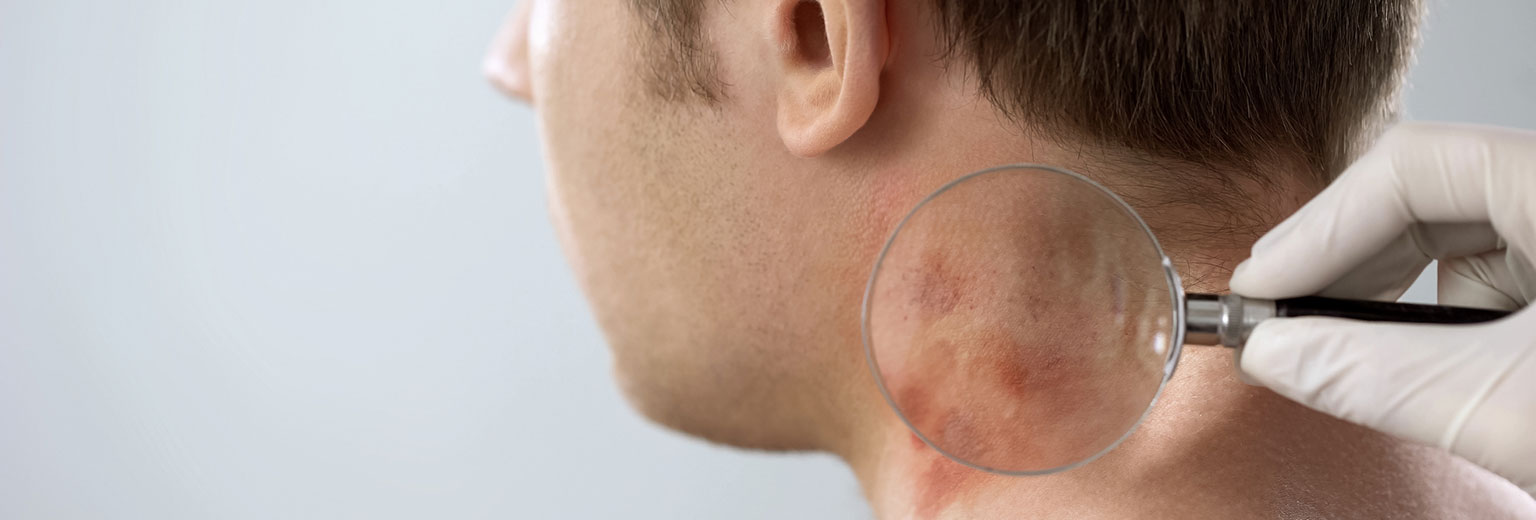A rash is a common skin condition in which the skin changes color or texture. Rashes have a wide range of causes and can appear anywhere on the skin. While they are usually temporary, they can be incredibly bothersome and may be an indication of a more serious health condition. If you or a loved one has developed a concerning rash, it is best to come in for a dermatological evaluation and treatment.
Common Types of Rashes
Common types of rashes include the following:
- Atopic Dermatitis (Eczema): This rash appears as patchy, dry, reddened skin that may also be irritated or itchy. It is often associated with asthma and allergic rhinitis (seasonal allergies).
- Allergic or Irritant Contact Dermatitis: This rash manifests as inflamed or swollen skin. The affected area may also be itchy, red, and dry. This type of rash is caused by a specific allergen, which can vary widely per individual. Common allergens that may cause contact dermatitis include chemicals, harsh cleansers, and plants.
- Fungal Rashes: Fungal infections such as ringworm may cause skin rashes. Ringworm appears as a ring-shaped rash with clearer skin in the center, and the rash may be itchy and scaly.
- Lichen Planus: This rash may be reddish purple, shiny, bumpy, and rough.
- Psoriasis and Seborrheic Dermatitis: These chronic conditions cause patches of itchy, scaly, burning, or crusty skin, especially on the scalp. People with these skin conditions usually experience periodic flare ups in which the rash worsens, then subsides.
- Viral or Bacterial Rashes: A variety of viruses and bacteria can cause skin rashes. Common examples include impetigo, chicken pox, shingles measles, scarlet fever, and fifth disease. These rashes may have crusted sores, fluid-filled blisters, blotchy red spots, or other distinctive features.
- Other Common Rashes: A number of common rashes are caused by various health conditions. These include erythema, erythroderma, pemphigus, bullous pemphigoid, herpes, diabetes, lupus, rheumatoid arthritis, autoimmune disorders, and others.
Treatment for Rashes
Rashes are temporary and can go away on their own. However, many individuals with rashes will require treatment to alleviate symptoms, improve quality of life, and reduce the risk of related complications such as an infection or a worsening rash.
Treatment for rashes may include:
- Topical steroids applied directly to the skin (ointment or cream)
- Oral antihistamines (if an allergy is confirmed or suspected)
- Corticosteroids
- Immunosuppressants
- Antibiotics/antibacterial medications for infections
- Anti-inflammatory medications or creams
- Anti-itch creams or medications
- Cooling creams and cold, wet compresses
- Light therapy treatments
- Ongoing or more extensive treatments for chronic or more serious rashes
Rash Prevention Tips
In many cases, rashes can be prevented. To reduce your risk of developing a rash, adopt the following practices:
- Wear gloves and other protective clothing when interacting with chemicals, harsh cleansers, and other irritants
- Limit direct-to-skin contact with chemicals, harsh cleansers, and other known irritants
- Avoid known skin irritants
- Limit contact with individuals known to have bacterial or viral infections
- Wear insect repellant in locations with high bug populations (especially when hiking or camping)
- Wash thoroughly after contact with animals, various plants, and other potential irritants
- Keep yourself up-to-date on recommended vaccinations
- Use soothing moisturizing creams and lotions to protect your skin

